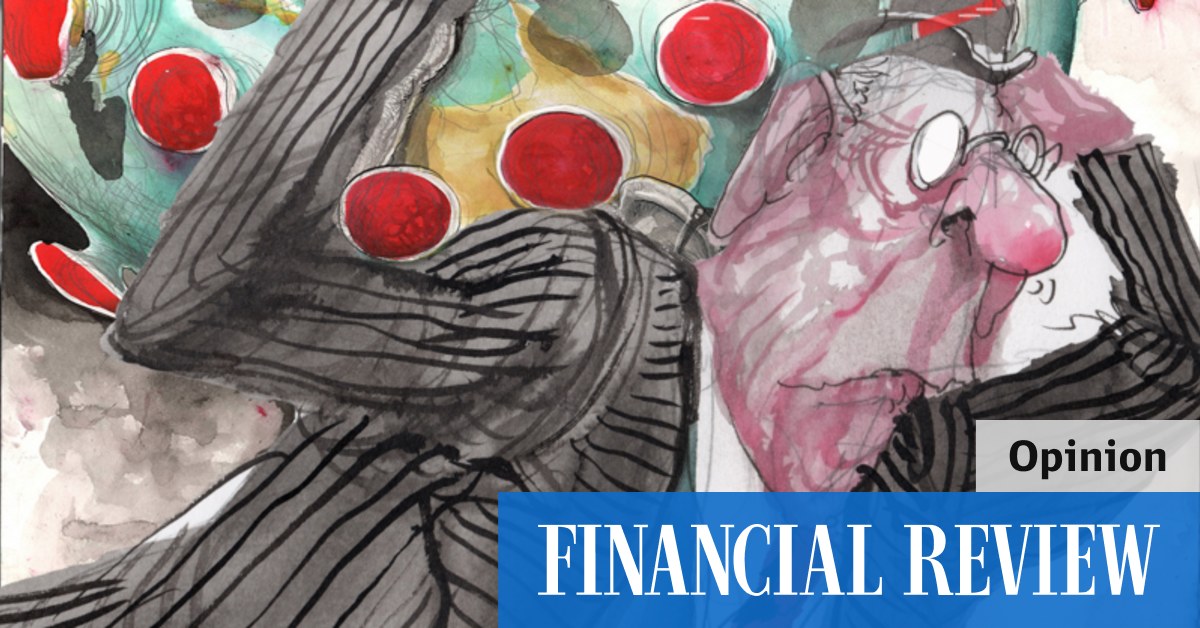cheap money avalanche
But Rob Almeida, global investment strategist and portfolio manager at the $US581 billion ($818 billion) investment giant MFS, says it’s useful to think about how profit margins got to this point. The last two years, when an avalanche of global stimulus payments sparked the surge in demand that has delivered us this inflation spike is clearly part of the answer.
But Almeida argues this is really a story that’s been building for more than a decade, when central banks flooded the world with cheap money to try and spark an economic recovery in the wake of the GFC – and never really turned the taps off.
This capital wasn’t used to invest in productive capacity to drive organic revenue growth but instead used to fund fat capital returns (high dividends and share buybacks) and acquisitions to drive inorganic growth across most sectors.
“This explains why the 2010s produced outsized profits but saw a feeble economic expansion and a historic gap in wealth between the owners of capital and labour. The excess of this last business cycle was corporate leverage and profits.”
Pandemic stimulus did nothing to change this picture. Almeida says that “instead of investing in plant and equipment or research and development, the government issued previously unimaginable quantities of debt so that consumers could buy more goods than the economy could produce. The result? Inflation.”
Almeida’s point is simple: until these excesses are washed out of the system – until corporate profits have come down, until the retail investors who are yet to meaningfully sell stocks have done so – it’s hard to make the case that markets have bottomed and are headed. for a durable economic recovery.
Pressure on revenues to rise
There are signs in the ASX reporting season that some of the forces behind the strong profit growth of the past decade are starting to reverse.
Consider what Bahamian fund manager Mark Holowesko argues were four main drivers of historically high margins: low interest rates, low wage growth (partly through better efficiency, but also due to the utilization of cheaper offshore labour), lower capital intensity thanks to globalized supply chains. and lower tax rates, particularly in the US. The last few weeks have provided anecdotal evidence that these tailwinds are turning into headwinds.
Interest rates are clearly rising and while we’ve seen only muted increases in financing costs from the companies that have reported so far – average borrowing costs at property giant Mirvac, for example, rose from 3.4 per cent to 3.9 per cent a June 30 – 2023 is likely to see more pressure. There are also surprising implications of higher inflation and rates; Rio Tinto, for example, took an earnings hit of almost $US300 million because rising inflation and discount rates means it needs to put aside more to rehabilitate mine sites when they close.
Wage growth is clearly on the rise, perhaps most viscerally at QBE, which pushed through two wage increases in three months for its staff. Commonwealth Bank is yet to complete negotiations on its enterprise bargaining agreement, but it’s braced for a significant jump.
Supply chain pressures have been seen across the ASX in the first weeks of reporting season with retailer Baby Bunting, which reported on Friday providing a neat example; not only did it miss $3 million of sales because supplies of a top-selling pram have been restricted, but it lifted inventory by 20 per cent to mitigate further delays. The pressure on capital intensity is also highlighted by explosive giant Orica, which supersized a capital raising for an acquisition to give it more than $200 million of spare cash to manage supply chain issues.
Given the state of pandemic-ravaged government budgets, tax reductions are off the table. Indeed, booming coal miner Coronado Global Resources is already seeing royalties rise, but now faces a new royalty regime in Queensland. Given what we’ve seen in other parts of the world, tax hits on the energy sector would hardly come as a surprise.
How these trends are borne out across the rest of the ASX reporting season is yet to be seen. But as interest rates keep rising and economic growth slows (hopefully bringing down inflation with it) the pressure on corporate revenues is likely to increase. But their costs – interest payments, wages, inventory, taxes – are moving higher in what Almeida argues is a structural change; he’d add in the cost of ESG as another rising burden.
Which brings us back to our original question: can the market really be at the bottom if the reversion in global profits is only getting started?
It is possible, if valuations have come down far enough to account for the fall in profits, or if a soft landing means profits won’t fall as much as feared. After the rally we’ve seen since mid-June and the softer CPI print on Wednesday night, that’s clearly worth thinking about.
But Almeida has a nice analogy to explain where we might be in the cycle. Market rallies, he says, are like an event, sort of like a party that everyone wants to attend. But market bottoms are a process, more like a hangover, where the excesses of the night before are only fixed over time.
“Historically, markets have tended to bottom when investors give up, stop caring, vow never to invest again and no longer ask, ‘Is this the bottom?’” Almeida says. “I’ve lived through that twice and I don’t think we’re there yet. But when investors stop asking whether we are, we will be.”
